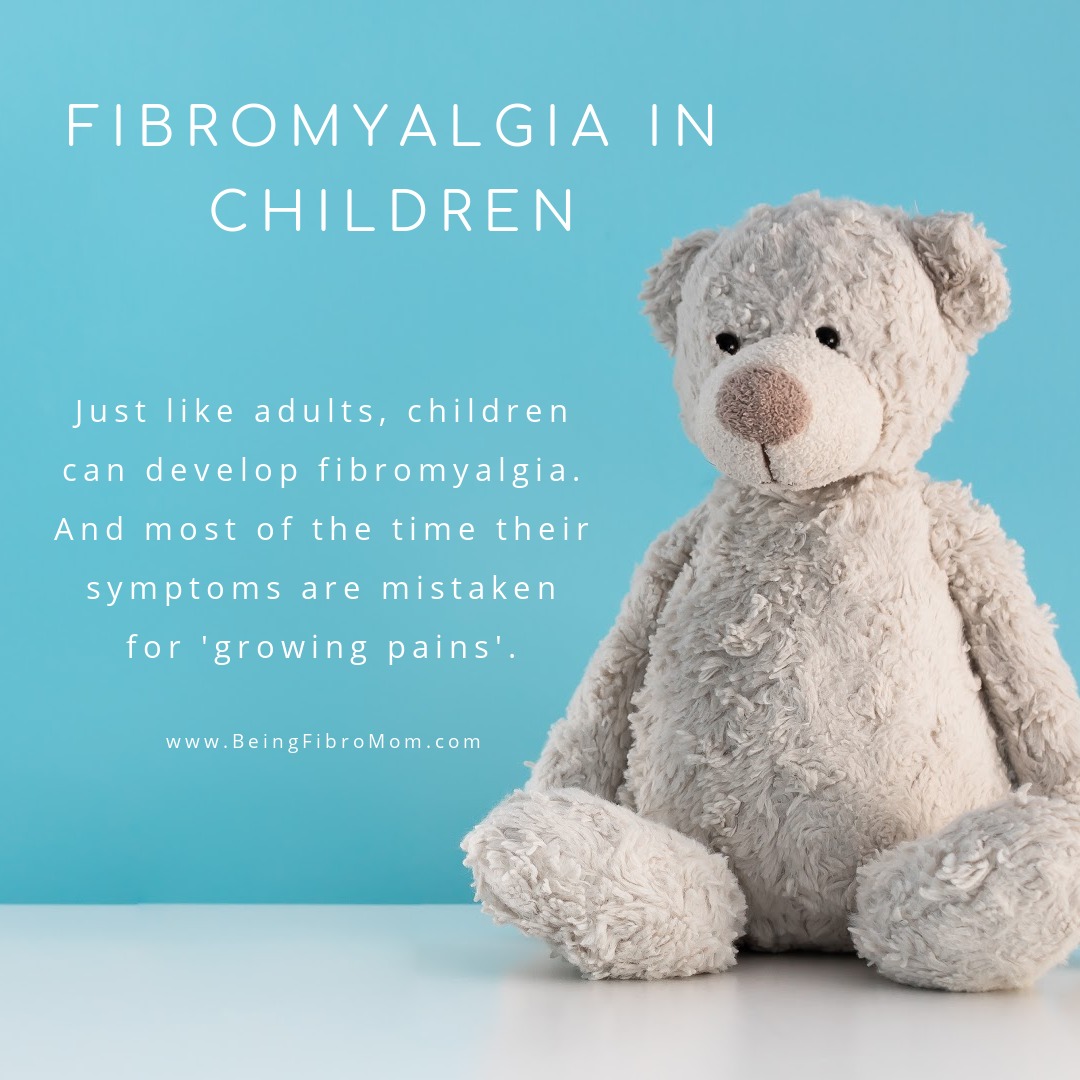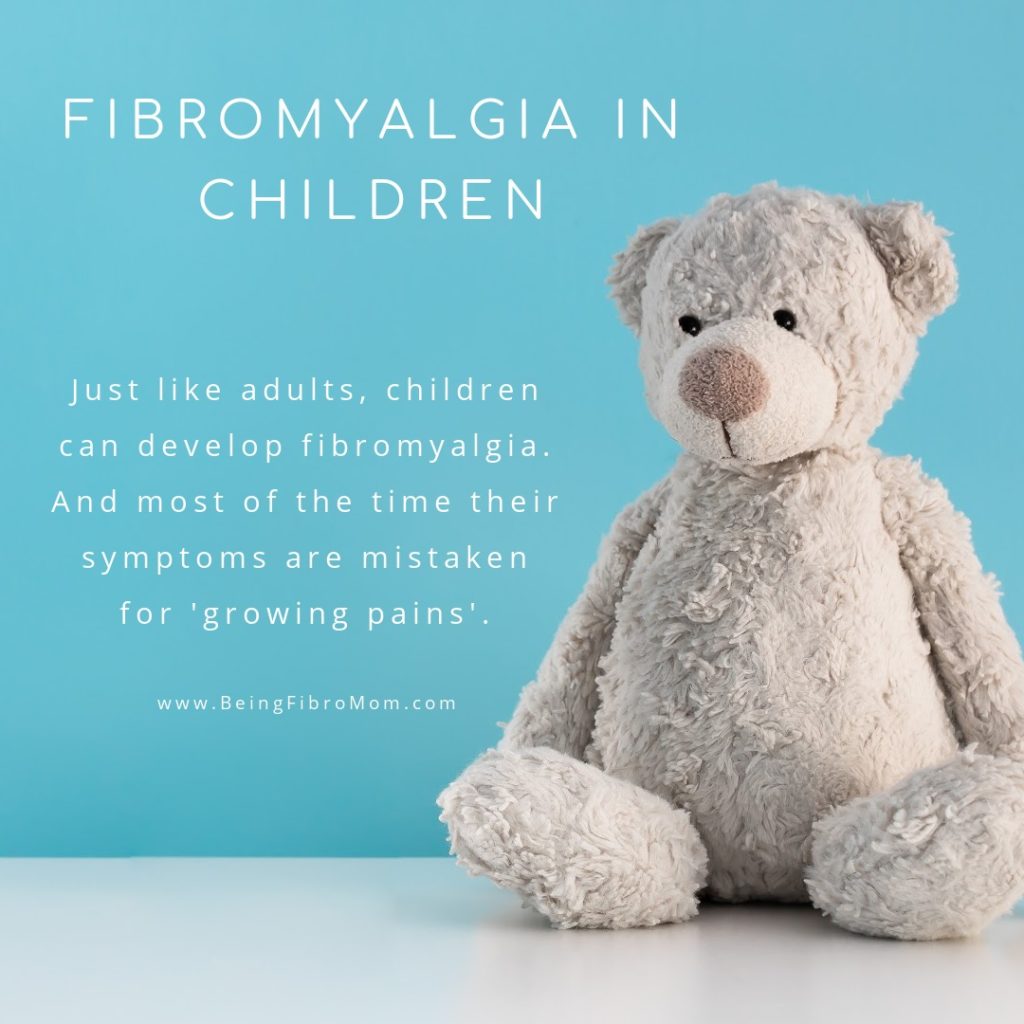Just like adults, children can develop fibromyalgia. Obtaining a diagnosis of fibromyalgia for an adult is difficult, but for a child, it can be much more difficult and frustrating. Here is some information regarding fibromyalgia in children including symptoms, diagnosis criteria, and treatment.

Fibromyalgia in Children
To date, approximately 7% of children have been diagnosed with fibromyalgia with many of them being between the ages of 13 and 15. And just as women are more likely to have fibromyalgia, girls are more likely to have it than boys. Here are the symptoms of fibromyalgia, seeking a diagnosis in order to start healing, and the treatments available to kiddos.
Click here to read You Think You Have Fibromyalgia; What Should You Do?
What are the symptoms?
The symptoms for children are similar to those in adults:
- tender points
- fatigue
- widespread muscle or chronic pains
- irritable bowel syndrome
- irritability
- headache
- stomachache
- sensory sensitivities
- trouble sleeping
- difficulty remembering
- frequent ‘growing pains’ in legs at night
- regularly waking up tired even though he/she went to bed at an early time the night before
- dizziness
- anxiety
- depression
- missing numerous days of school due to recurring symptoms
Seeking a diagnosis
There is no one test to have a clear yes or no to having fibromyalgia, but there are other exams that can be performed to rule out other conditions and narrow the diagnosis down to fibromyalgia. Read about the diagnostic criteria for fibromyalgia.
These steps to diagnosis include:
- physical exam(tender points)
- review of medical history
- length of the symptoms
What are the treatments?
As with fibromyalgia in adults, treatment can be found using a physician (pediatric rheumatologist), physical therapist, and psychologist. More information can be found on the US Pain Foundation website in the article Managing Fibromyalgia in Children.
Treatments include:
- pain management
- exercise
- natural treatments
- relaxation techniques
- medicine
- acupuncture
- physical therapy
- increase quality of sleep (not just the quantity of sleep)
Most importantly, listen to your child. No one knows them better than you. If you suspect something more is happening, please seek the care of a pediatrician.



Hi, Brandi –
I found your blog through the Throwback Thursday link-up. We have a lot in common. My son and I both have ME/CFS (both of my sons got ill when they were just 6 and 10 but the younger one recovered).
You might be interested in a Facebook group I started for parents whose kids have ME/CFS, fibro, and other related conditions:
https://www.facebook.com/groups/164665786958252/
The group is very warm and supportive, with plenty of emotional support but also lots of practical experience with treatments that can help our kids (and school help, too).
Great post, by the way! Nice to “meet” you –
Sue
Live with CFS
Thanks for the invitation to the group! I look forward to joining others in the group!
Nice to meet you, too, and gentle hugs, friend!
I am so happy we found each other! Enjoying your blog! My 15 yr old daughter was diagnosed when she was 12, immediately after her thyroid function stopped working. She was diagnosed with Hashimoto’s which caused Fibro and Neuropathy. She too has widespread pain, not as many trigger points, but tgat is normal and oddly her feet and ankles swell up. Fatigue still gets her but she remains active. Thank you again for sharing! Hugs!
Jenn
http://www.jenndsblog.blogspot.com
I’m glad she’s able to remain active despite her daily challenges. Kids tend to be more resilient, but it’s still difficult on their bodies. I am also happy you found my blog! I’m happy to help with others especially kids. Well, in your daughter’s case, young adult. 🙂
Gentle hugs to you both!